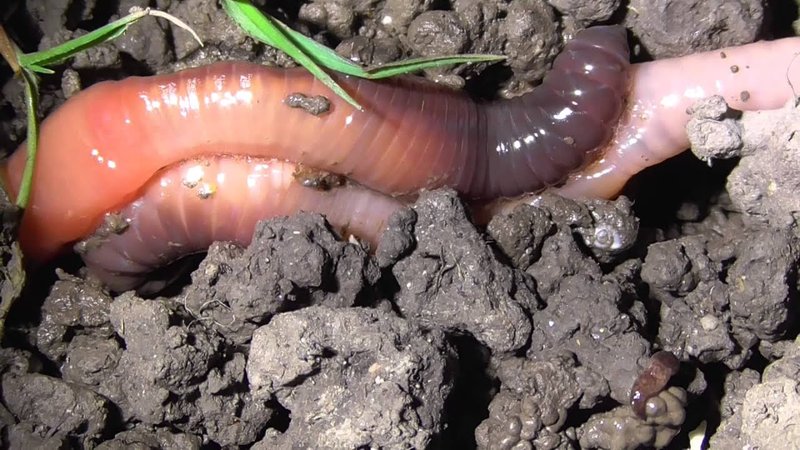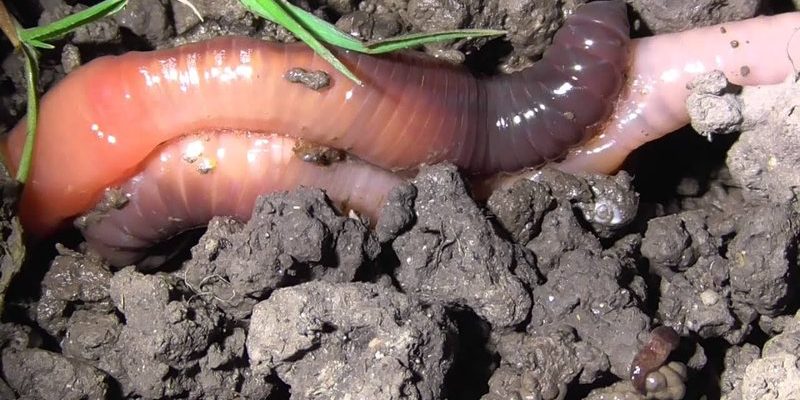
Understanding their reproduction is crucial, especially since the Giant Palouse Earthworm is considered endangered. Knowing how they mate, lay eggs, and care for their larvae helps scientists and conservationists protect this remarkable species. So grab a cup of coffee, and let’s dig deep into the fascinating world of Giant Palouse Earthworm reproduction!
Understanding the Mating Process
The mating habits of the Giant Palouse Earthworm are as intricate as they are intriguing. During the breeding season, which typically occurs in the spring, these worms come together to mate. They engage in a unique courtship ritual, often described as a synchronized dance. Honestly, it’s quite charming when you think about it!
During mating, two worms align themselves ventrally, exchanging sperm. You might be wondering how they even know who to pair with. Earthworms have both male and female reproductive organs, allowing any two individuals to mate. Once the sperm transfer is complete, they separate and go their own ways, each carrying the potential for new life.
Following the mating process, the Giant Palouse Earthworm enters a significant phase in its life cycle. The two worms will later produce a cocoon—a protective casing that holds the eggs. This is a crucial step in ensuring that the next generation is well-protected from the environment.
The Role of Environmental Conditions
You might not expect it, but the environment plays a vital role in the reproduction of the Giant Palouse Earthworm. These earthworms prefer moist, loamy soil found in the Palouse region, which is rich in nutrients. The moisture is essential for several reasons: it helps the worms move through the soil and also keeps the eggs safe and hydrated.
If the soil becomes too dry, it can significantly impact their ability to reproduce. Dry conditions can lead to decreased mating success and even impact the survival of eggs. Therefore, conservation efforts often focus on maintaining the right soil conditions to support these incredible creatures.
In some cases, scientists have to monitor weather patterns and soil health to ensure that the worms have a suitable habitat. This proactive approach is essential for preserving their population and ensuring they can reproduce successfully.
Egg-Laying and Cocoons
After mating and sperm exchange, the Giant Palouse Earthworm will produce cocoons as their home for the eggs. These cocoons are small, typically about the size of a pea, and can vary in color from light brown to a darker hue. Each cocoon can hold anywhere from 1 to 5 eggs, making it a cozy little nest for the next generation.
Here’s the thing: the cocoons are made from a combination of mucus and soil, which helps protect the eggs inside from predators and environmental hazards. Once laid, the cocoons will stay buried in the soil for a period ranging from a few weeks to several months, depending on environmental conditions.
During this incubation period, the temperature and moisture levels can significantly influence the development of the embryos. If conditions are just right, the eggs will hatch, and tiny earthworms will emerge, ready to start their journey in the world below the soil.
Larval Development and Care
Once the eggs hatch, we enter the intriguing world of larval development. The baby worms, called larvae, are incredibly tiny and resemble miniature versions of their adult counterparts. At this stage, they are still quite vulnerable and rely on their surroundings for survival.
The larvae will spend a considerable amount of time in the soil, feeding on organic matter to grow. Interestingly, unlike many other species, Giant Palouse Earthworms do not have parental care after the eggs hatch. Instead, the young worms must fend for themselves as they adapt to their underground environment.
As they grow, they will undergo several molts, which is a natural process where they shed their skin. This allows them to grow larger and gain the strength needed to navigate through the soil. It’s a long journey from a tiny larva to a fully grown Giant Palouse Earthworm, but each stage is crucial for their survival.
Challenges in Reproduction and Conservation
Despite their fascinating reproductive process, the Giant Palouse Earthworm faces several challenges that threaten their survival. Habitat loss due to agricultural development has had a significant impact on their populations. The disruption of their natural environment not only affects their mating success but also the availability of suitable nesting sites for their cocoons.
Additionally, climate change poses a risk, as changing weather patterns can affect soil moisture levels. Too much rain can wash away cocoons, while prolonged drought can dry out the soil, hindering mating and egg development.
Conservation efforts are vital to ensuring the survival of this species. Programs that promote sustainable agricultural practices can help preserve their habitat, while research efforts provide valuable insights into their reproductive biology. Understanding the challenges they face is the first step toward protection.
Why Understanding Reproduction Matters
You might wonder why it’s essential to understand the reproduction of the Giant Palouse Earthworm. The answer is straightforward: by studying how these worms reproduce, we can better protect their habitats and ensure their survival.
Their unique life cycle highlights the delicate balance of ecosystems. When we take the time to learn about creatures like the Giant Palouse Earthworm, we gain a deeper appreciation for biodiversity and the interdependence of species. Conservation efforts rely on this knowledge to create effective strategies for protecting not just worms but the entire ecosystem they inhabit.
So, the next time you think about earthworms, remember that there’s a whole world of complexity beneath the surface. By understanding their reproduction and life cycle, we’re taking steps toward a healthier planet for all living creatures.
In conclusion, the reproduction of the Giant Palouse Earthworm—from mating and egg-laying to larval development—is not just a fascinating biological process; it’s a vital component of conserving a species and an ecosystem. By appreciating and protecting these magnificent creatures, we contribute to the health of our environment. Let’s keep the conversation going about these remarkable earthworms and what we can do to help!

